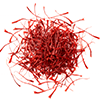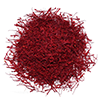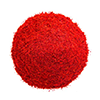About Saffron
What Is Saffron?
Saffron! The name itself sounds exotic and alluring. Red strands tinged with yellow; a fiery beauty which humans have found irresistible for millennia.
Saffron is made from the saffron crocus, a purple flower that blooms in autumn and the flowers only bloom for one to three weeks each year.
” Each bloom from this crocus produces three yellow styles, each of which ends with a crimson-red stigma. The combination of golden style and crimson stigma constitute what we know as a saffron thread. These threads are plucked by hand and dried, resulting in a fragrant, beautiful spice that is prized the world over.
Iran is one of the oldest regions known to have cultivated saffron. Iran’s agricultural and garden products including Saffron enjoy high quality due to the variety in its climatic conditions.
Different Types of Saffron
Our main products include all kind of saffron such as Negin, Sargol, Poushli , Bunched (Dasteh) , White Saffron and Saffron Powder with different quality & Packaging.
Saffron Benefits
Quality Control
We handpick our raw-materials from our network of local farmers, carefully selecting each item, always ensuring consistent and premium quality.
To verify the standard quality of the Saffron, our company has been equipped with a highly specialized and technical laboratory.
By using the chromatography method, the type, the quantity, and the amount of saffron compounds are determined and compared with those prescribed by the relevant standard.
Any Deviation from the prescribed ranges shows the sample is adulterated and it is removed from the cycle of processing.
Our products constantly undergo rigorous Physical, Chemical and Microbiological laboratory experiments before being delivered to the target market.
Based on the method of testing ISO 3632-2, strands of saffron are divided into different quality categories by measuring the crocin (relates to the color), safranal (fragrance or aroma) and picrocrocin (taste) concentration.
Mass Production of Saffron
Iran is producing more than 93% of Saffron Production in worldwide and about 90% of its product is in Central Khorasan Province.
Generally the climatic and geographical condition completely influence on the quality and amount of plant cultivated and harvest in different parts of the world. Iran’s agricultural and garden products including Saffron enjoy high quality due to the variety in its climatic conditions.







